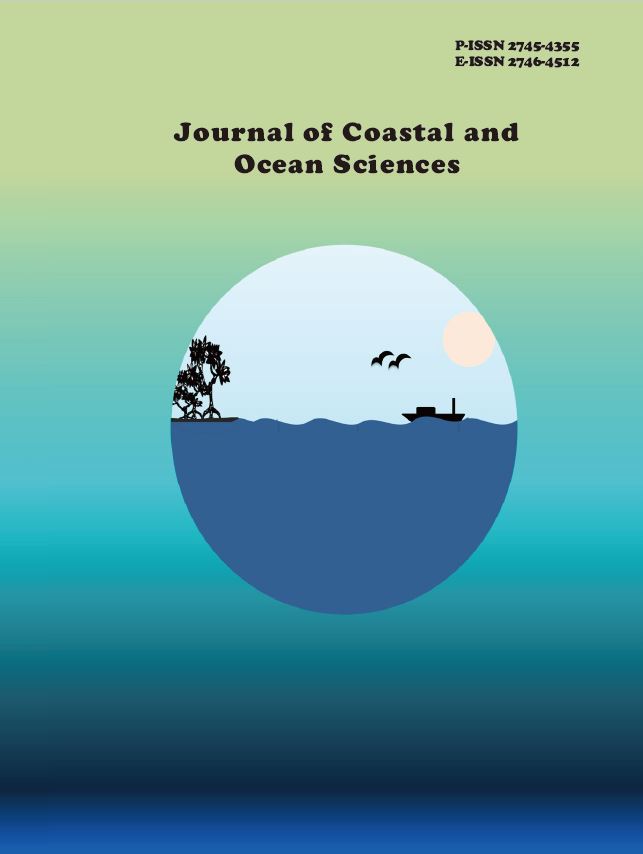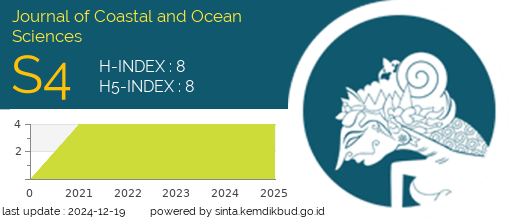Sustainability Status of Gillnet Fisheries Based on Ecological, Social, and Economic Dimensions in the Riau Province Fisheries Port Technical Unit
DOI:
https://doi.org/10.31258/Keywords:
Rapfish, Gillnet, Fisheries SustainabilityAbstract
Gillnet fishing gear is an environmentally friendly fishing gear but in 2018-2020 the catch was reduced. The purpose of this study was to determine the sustainability status of gillnet fisheries based on ecological, social, and economic aspects at the Riau Province Fisheries Port Technical Unit. Data analysis in this study used Rapfish (Rapid Appraisal for Fisheries) technique. The rapfish technique is a multidisciplinary ordination technique used to evaluate/determine/compare the status of fisheries in terms of their sustainability. This study shows that in general, the sustainability index of gillnet fisheries in the Riau Province Fisheries Port Technical Unit is between the index values of 25.01-50 which is classified as less sustainable. Monte Carlo simulation results show that the distribution of sustainability index plots is at a distance that is not far and coincides with the position of the sustainability index ordination, supporting the accuracy of determining the ordination of the sustainability status examined. Sensitivity analysis showed that the attributes of changes in fish weight in the last 5 years, family participation in the utilization of fishery resources, and alternative employment and income are attributes that greatly affect the sustainability of gillnet fisheries in the Riau Province Fisheries Port Technical Unit
Downloads
References
Fauzi, A., Anna, S. (2002). Evaluasi Status Keberlanjutan Pembangunan Perikanan: Aplikasi Pendekatan Rapfish (Studi Kasus Perairan Pesisir DKI Jakarta). Jurnal Pesisir dan Lautan Indonesia, 4(2): 36-49.
Megawati., Syofyan, I., Syaifuddin. (2016). Analisis Usaha Penangkapan Sondong dan Pengembangannya di Kota Dumai. Jurnal Online Mahasiswa Bidang Perikanan dan Ilmu Kelautan.3(2):1-12.
Putri, A.A., Solihin, I., Wiyono, E.S. (2017). Optimization of Fishing Port Function in Marketing of Fish Catch in Lempasing Coastal Fishing Port. Albacore, 1(2): 171-183.
Salmarika, A.A.T., Sugeng, H.W. (2018). Status Pengelolaan Sumber Daya Ikan Tongkol di Perairan Samudera Hindia Berbasis Pendaratan Pukat Cincin di Pelabuhan Perikanan Samudera Lampulo, Aceh: Suatu Pendekatan Ekosistem. Jurnal Penelitian Perikanan Indonesia, 24(4): 263-272.
Subehi, S., Boesono, H.S., Ayunita, N.N.D. (2015). Analisis Alat Penangkapan Ikan Ramah Lingkungan Berbasis Code O Conduct for Responsible Fisheries (CCRF) di TPI Kedung Malang Jepara. Jurnal Perikanan Tangkap I(3):1-10
Yusuf, M., Wijaya, M., Surya, R.A., Taufik, I. (2021). MDS-RAPS Teknik Analisis Keberlanjutan. Makassar: Cv. Tohar Media






